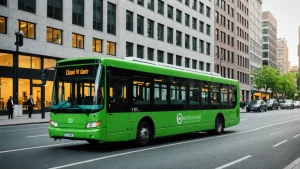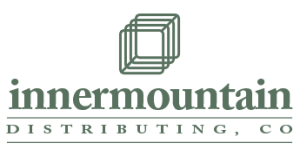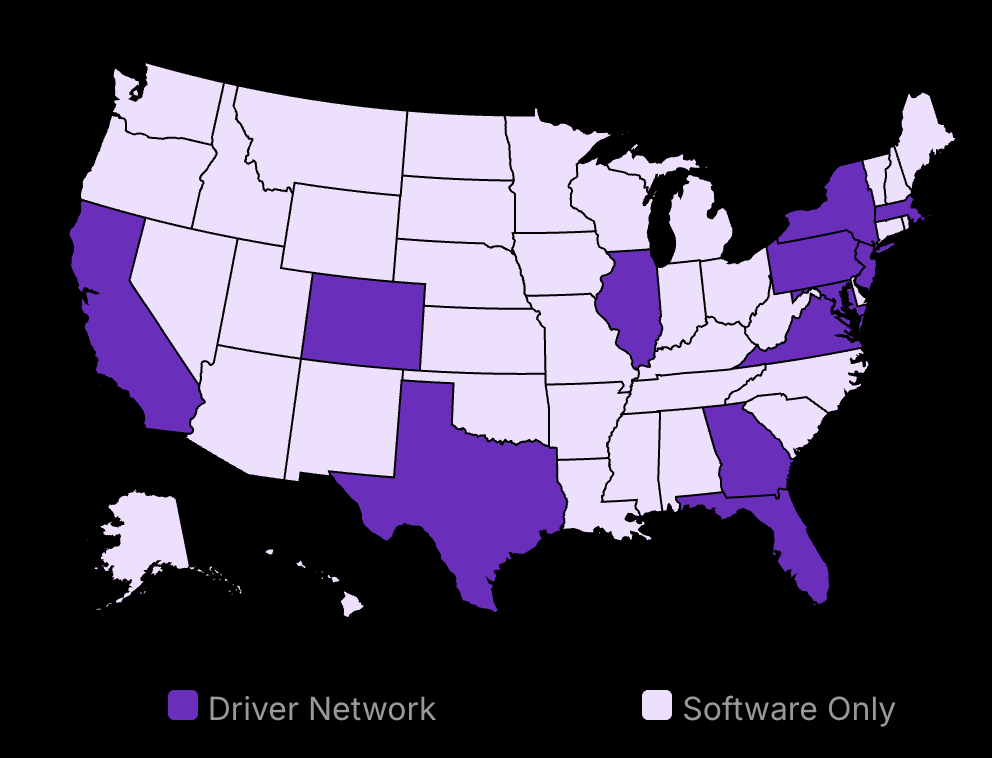In the sphere of route planning, a seismic shift is underway as we move from static to dynamic route optimization. You’re about to grasp the key differences between static and dynamic route optimization and learn why this could be a game changer in enhancing your logistics efficiency. Explore the advantages of dynamic routing over static planning and unravel how optimized routing can revolutionize your delivery performance and logistics management.
Think of an overcrowded city at peak hours, the constant stop and starts, detours, and delays. Compare that to a late-night drive on an open highway with the occasional speed bump. Static and dynamic route optimization are just like these scenarios. Unlock the advantages of optimizing your routing strategies, enhancing the efficiency of your logistics and transportation journey.
Get ready to revolutionize your route planning strategy. Let’s hit the road, shall we?
Unveiling the Core Differences Between Static and Dynamic Route Optimization
-
Static Route Optimization refers to pre-planned routes with no room for real-time adjustments.
Dynamic Route Optimization allows for flexibility and adaptability, accommodating changing circumstances on the go.
-
Both methods offer benefits and drawbacks, tailored towards different transport and logistics needs.
Brief Definition of Static Route Optimization
Static Route Optimization operates under the assumption that conditions, like traffic patterns and vehicle availability, remain constant. This method is effective for routines that are predictable and less affected by road and traffic variables. Curious about the difference static optimization makes in planning routes for trucks? Discover how truck routing considerations shift under static assumptions.
When planning routes, variables such as distance between drop-off points, vehicle load capacity, and the route’s time window are considered. Operators use this information to create the most efficient and best route possible, without room for ongoing adjustments. Discover how software for planning routes can optimize your journey, lower expenses, and revolutionize the way you manage logistics.
Static Route Optimization typically works best in environments with fixed schedules and minimal variability, such as school bus routes, or fixed delivery routes in less congested areas. While static routing lacks flexibility, its predictability can offer a robust framework for certain logistical requirements. Enhance your static routing strategy by integrating route optimization through Google Maps, leading to time efficiency and lowered operational expenses.
Brief Definition of Dynamic Route Optimization
Different from Static Route Optimization’s rigid framework, Dynamic Route Optimization thrives off adaptability. This powerful tool excels at managing shifting situations on the go, such as unpredictable traffic or sudden order changes.
Dynamic routing harnesses modern technology and real-time data to immediately adjust routes to maximize efficiency. At its core, dynamic routing tools consider traffic fluctuations, changes in order demand or priority, vehicle breakdowns, or even weather impacts, modifying its route plans in real-time while keeping businesses nimble and responsive. Discover how dynamic routing technologies utilize advanced route optimization algorithms to adjust and improve delivery paths in real time, ensuring maximum efficiency for businesses.
This tool is valuable for logistics operations dealing with numerous variables or uncertainties that could disrupt planned routes or existing systems, such as courier or food delivery services in busy city centers. Enhance your logistics efficiency by mastering route optimization with Google Maps, ensuring timely deliveries even in unpredictable city landscapes.
Key Differences Between the Two
At its core, the major difference between Static and Dynamic Route Optimization is adaptability. Static routing excels when predictability is paramount. It provides a controlled and consistent system optimal for fixed delivery schedules with minimal variables. Understand the nuances behind the problem of routing vehicles and how it can be maneuvered to enhance both static and dynamic route optimization strategies in the logistics landscape.
In contrast, Dynamic Routing is built for flexibility, allowing for en-route adjustments to maximize efficiency amidst changing situations.
While both methods serve crucial roles in route planning, they cater to different needs and scenarios. Understanding these distinctions can empower businesses to make informed decisions when developing their traditional route planning and management strategies.

Save 80% of delivery management time
We handle everything:
- Dedicated operations manager
- Real-time tracking dashboard
- Automated customer notifications
- Urgent issue resolution
Why Dynamic Route Optimization Software is a Game Changer
Dynamic route optimization software is a game changer for delivery operations. Implementing dynamic delivery route optimization can completely transform the delivery process and provide cost savings for businesses. With dynamic route planning software, delivery routes can be optimized for maximum efficiency, reducing fuel costs and improving productivity. Experience the advantages of dynamic route optimization tools and boost your delivery performance.
Real-Time Adjustments in Dynamic Route Planning
Dynamic routes are optimized based on real-time data, taking into account traffic conditions, weather patterns, historical data, and customer information to provide the best routes for faster deliveries. The use of dynamic routing solutions can reduce operational costs by reducing idle time and fuel consumption on the most efficient routes. This is achieved by constantly analyzing data sources and selecting the optimal routes at any given moment. Explore how the latest gratis route mapping applications of 2024 can enhance dynamic route optimization by offering the most efficient pathways with updated real-time data, ultimately lowering operational expenses and improving delivery times.
Dynamic Route Optimization works to enhance efficiency by using vehicle capacity to reduce distance traveled and delivery times. The user-friendly interface of the dynamic route optimization work planning software ensures that businesses can start optimizing routes with a minimal learning curve. Discover how to streamline your route planning and cut fuel expenses by mastering route optimization with Google Maps.
Flexibility is another word that comes to mind when we talk about a dynamic routing solution. As changes occur, the routing systems automatically adjust, ensuring an optimized plan. This adaptability not only reduces time wasted but also maximizes customer satisfaction.
Dynamic route optimization software is a cost-efficient solution for delivery management, particularly for last-mile delivery and postal service companies. By optimizing routes, businesses can save fuel costs, reduce costs, and make more deliveries, ultimately improving their bottom line. Discover how embracing dynamic routing software can elevate your delivery management system, by streamlining operations and enhancing your bottom line.
Benefits of Dynamic Route Optimization
The advantages of dynamic route optimization are obvious, but let’s look at some of its key benefits.
Resource Efficiency
Time and resources have always been precious commodities in logistics. Dynamic routing optimizes both. It reduces idle time and improves the utilization of vehicles, reducing costs significantly.
Cost Efficiency:
Dynamic route optimization can lead to a 53% increase in productivity for businesses that implement it.
Customer Satisfaction
Unscheduled delays? They’re almost history with dynamic fleet management and route optimization. Timely deliveries mean happy customers, which in turn builds strong business relationships.
Timely Deliveries:
Dynamic route optimization can reduce delivery delays by up to 25%.
Increased Customer Satisfaction:
The average customer satisfaction score increases by 16% with dynamic route optimization.
Environmental Friendliness
With optimized routes, there’s less fuel consumption. This not only reduces operational costs but also lowers CO2 emissions, helping your company outline an eco-friendlier footprint. Discover how enhancing your routing strategies can further your commitment to sustainability and efficiency through effective delivery route management.
Dynamic Routing in Action
While the theoretical advantages of dynamic routing are remarkable, real-world applications paint an even brighter picture. Take, for instance, an e-commerce giant that employed dynamic route optimization to handle last-minute surges in orders. Delve into how the intricacies of the traveling salesperson problem play a pivotal role in enhancing dynamic routing systems for efficient delivery processes.
Increased Efficiency:
Dynamic route optimization can generate routes up to 40% more efficient than those developed by experienced human planners.
By implementing dynamic routing, they managed to improve their efficiency by a substantial margin, much to the delight of their customers, and to the chagrin of their competitors.
The Limitations of Static Route Planning
Drawbacks of Static Route Planning
Static route planning, while simple and easy to execute, continually falls short of delivering optimum efficiency. This system, which typically involves planning out a single fixed route or several fixed routes, can often seem like a clear-cut choice. However, it lacks adaptability and does not consider real-time changes in road conditions, which are common in most urban areas. Optimize your travels with Dynamic Multi-Stop Route Planning, ensuring you always take the most efficient path regardless of unexpected road conditions. Discover the advantages of upgrading from static planning in our latest blog.
Like a rigidly scheduled arrangement, static route planning doesn’t consider the various external variables that could disrupt a planned route. For instance, unplanned road works, unexpected traffic jams, or sudden closure of roads can abruptly disrupt static routes, causing significant delays. This lack of flexibility may lead to longer transit times and a decline in service quality, harming customer satisfaction and your business’s bottom line.
Optimizing Routes:
Real-time traffic updates can change the optimal route by up to 35% compared to static route planning.
Moreover, static route planning doesn’t take into account fluctuations in demand and varying load sizes, instead adhering to a more predefined route pattern. This lack of dynamism can result in underutilized resources and increased overhead costs.
A Real-World Example of the Limitations of Static Routing
Let’s consider an imaginary, delivery service company named “QuickDeliver”. QuickDeliver has always used static route planning for its fleet of delivery trucks. They found it quite straightforward to use, as they only had to plan their routes once and then use them continuously.
However, after a sudden roadworks incident that rendered one of their main routes inaccessible, QuickDeliver’s operations were severely impacted. Deliveries were delayed and customers were unhappy. Even when they reacted and switched to alternative fixed routes, those routes too had their issues, caused by unforeseen traffic congestion and additional distance covered. This forced them to bear extra fuel costs, more delivery time, pay overtime to drivers, and manage disgruntled customers.
And that’s not all; when there was a surge in demand during peak seasons or holidays, they could not spontaneously adjust their capacity to handle the increased orders. Fixed routes retained their same load and number of trips, leaving some trucks overloaded and delaying several deliveries. Unhappy customers, lost opportunities, and increased operational costs became the order of the day for delivery companies.
This example, although hypothetical, mimics what can happen in reality when static routing is relied upon entirely. Despite its seeming simplicity, static route planning can cause critical inefficiencies and customer dissatisfaction.
Now you may be wondering, is there a way to avoid these issues altogether? An approach that offers adaptability to real-time changes and can intelligently handle varying demands? Stay tuned.
Cost Efficiency: Static vs Dynamic Route Optimization
Cost Efficiency: Static vs Dynamic Route Optimization
The gap between static and dynamic route optimizations when it comes to cost-effectiveness is vast. Static route planning can lead to inflated logistics costs due to fuel wastage, excess manpower hours, and inefficient use of resources. On the other hand, dynamic route optimization dynamically adjusts routes based on ever-changing variables such as current traffic conditions, weather conditions, and customer preferences, leading to significantly reduced logistical costs.
Comparative Efficiency:
-Static route optimization is up to 30% less computationally intensive than dynamic optimization.
-Dynamic route optimization can reduce total distance traveled by 22% compared to static planning.
-The average cost savings from dynamic route optimization is 19% compared to static planning.
-92% of network administrators find static route optimization important for improving network performance.
The Role of Dynamic Routing in Cost-Saving
Dynamic route optimization’s ability to adapt to changing circumstances in real time results in impressive cost savings. The technology behind dynamic routing allows drivers to take the most efficient route possible, reducing fuel consumption. Furthermore, it leads to fewer hours on the road, saving on labor costs, and less wear and tear on vehicles, saving on maintenance and repair fees.
Improved Delivery Operations:
Dynamic route optimization can improve on-time delivery rates by 18%, and reduce the number of late deliveries by 28%.
Dynamic route optimization results in better capacity utilization. The system can adjust and optimize routes to allocate resources optimally, allowing companies to make the most out of their existing fleet without unnecessary future asset investments.
Real-time adjustments
The key factor that sets dynamic routing apart is its ability to make real-time adjustments. Instead of following a predetermined route, which static route planning offers, dynamic routing provides the flexibility to adjust delivery routes based on changes that occur during the day. These could include road closures, traffic, or last-minute customer cancellations – all leading to more efficient routes, hence further savings.
Navigating the Road to Efficient Route Planning
Dynamic route optimization transcends the rigid structure of static routing–offering adaptability, real-time problem-solving, and inherent flexibility. The increased efficiency not only reduces logistics challenges but can also strongly impact fuel consumption and customer satisfaction. Discover the benefits of planning routes with multiple stops to further enhance efficiency, reduce expenses, and elevate customer experiences.
The direction is clear. Embrace dynamic route optimization as a part of your logistics strategy. Begin with getting your team trained. Understand how it aligns with your operations.
Are you ready to transform your business’s logistics with a dynamic approach to route planning and optimization? Remember, a smoother journey leads to happier customers and more profitability. Now ask yourself, isn’t it time your business made the switch?
Change your GPS coordinates to success.





























